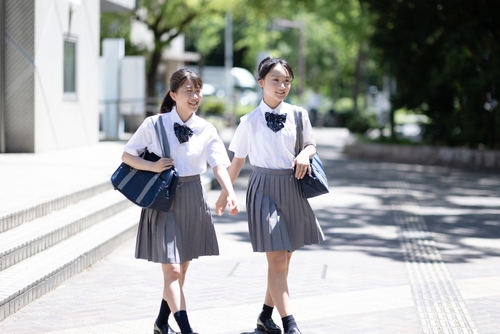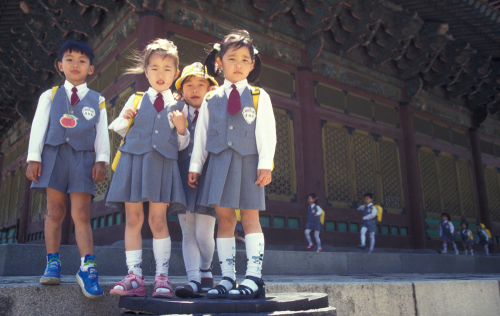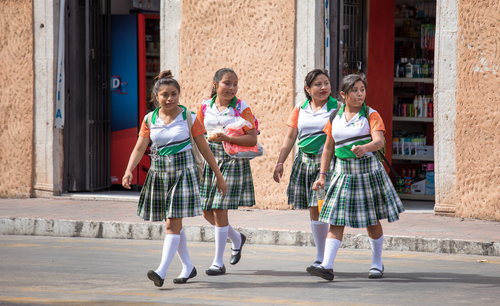School uniforms tell fascinating stories about culture, tradition, and identity. From the crisp sailor-style outfits of Japanese students to the vibrant saris worn in Indian schools, uniforms reflect each country’s unique values and history. This exploration reveals how different nations approach school dress codes and what these choices mean for students worldwide.
Whether you’re curious about global education practices or planning an international move with school-age children, understanding uniform traditions helps you appreciate the rich diversity of educational cultures. Let’s discover how students dress for learning across six continents.
The Purpose Behind School Uniforms
School uniforms serve multiple purposes that extend far beyond simple dress codes. They create visual unity among students, reduce social pressure related to clothing choices, and often instill a sense of pride and belonging. Many educators believe uniforms help students focus on learning rather than fashion competition.
Different countries emphasize various aspects of uniform wearing. Some prioritize tradition and discipline, while others focus on practical benefits like safety and equality. These varied approaches create the wonderful diversity we see in school uniforms globally.
Asia: Where Tradition Meets Modernity
Japan’s Iconic Sailor Suits and Blazers

Japanese school uniforms, known as “seifuku,” are instantly recognizable worldwide. Middle and high school girls traditionally wear sailor-style tops with pleated skirts, while boys sport military-inspired uniforms with standing collars called “gakuran.” Modern schools increasingly adopt Western-style blazers and ties.
These uniforms carry deep cultural significance. Students take pride in their school’s specific uniform design, and many alumni feel nostalgic about their school days when seeing their old uniforms. The attention to detail in Japanese uniforms reflects the country’s emphasis on precision and respect for education.
South Korea’s Seasonal Style

South Korean students experience dramatic uniform changes throughout the year. Summer uniforms feature light fabrics and short sleeves, while winter versions include sweaters, jackets, and even long pants for girls who typically wear skirts. Many schools allow students to mix and match approved pieces.
Korean uniforms often incorporate school colors and logos prominently. Students accessorize with matching bags, shoes, and even hair accessories that complement their uniforms. This system teaches young people about appropriate seasonal dressing while maintaining school identity.
India’s Regional Diversity

Indian school uniforms vary dramatically by region and school type. Government schools often require simple white shirts with colored bottoms, while private institutions may have elaborate uniform sets. In some areas, girls wear traditional salwar kameez or even saris, especially in higher grades.
The diversity reflects India’s cultural richness. Schools in different states may incorporate local textile traditions or colors that hold regional significance. This approach honors cultural heritage while promoting educational unity.
Europe: Classic Styles with Modern Touches
United Kingdom’s Enduring Traditions

British schools maintain some of the world’s most traditional uniform policies. Many institutions require blazers with school crests, ties in house colors, and formal shoes. Some prestigious schools have uniform traditions dating back centuries, with specific rules about everything from sock colors to hair accessories.
These traditions create strong school identity and alumni connections. Former students often recognize fellow alumni by their school ties or blazers, creating lifelong networks. The formality teaches students about professional dress expectations from an early age.
France’s Relaxed Approach

France takes a notably different approach, with most public schools having no uniform requirements. Students dress in regular clothes, though some private schools maintain uniform policies. This reflects French educational philosophy that emphasizes individual expression and critical thinking.
When French schools do require uniforms, they tend to be simple and understated. The focus remains on learning rather than appearance, aligning with the country’s secular educational values.
Africa: Celebrating Heritage and Practicality
Ghana’s Colorful Expressions

Ghanaian students wear some of the world’s most vibrant school uniforms. Different days of the week may require different uniform combinations, with Friday often designated for traditional Ghanaian clothing. Students proudly wear colorful kente patterns or locally-made fabrics that celebrate their cultural heritage.
These uniforms serve practical purposes too. The bright colors help with student identification and safety, while the variety keeps students engaged with their daily dress routine. Parents often take pride in purchasing beautiful uniform fabrics that support local textile industries.
South Africa: Cultural Evolution

South African school uniforms have evolved significantly over time. Many schools now incorporate elements that celebrate the country’s diverse cultural heritage. Some institutions allow students to wear traditional accessories or modify uniforms to reflect their cultural backgrounds.
This evolution demonstrates how uniforms can adapt to support inclusivity and cultural recognition. Schools work to balance unity with respect for the nation’s rainbow culture.
The Americas: Practical and Diverse
United States: The Great Debate

American schools present the world’s most varied approach to uniforms. Some districts require strict uniform policies, others have dress codes, and many allow complete freedom in student attire. This diversity reflects American values of local control and individual choice.
Schools with uniform requirements often cite improved focus, reduced bullying, and better school climate as benefits. Students and parents have mixed reactions, with some appreciating the simplicity while others prefer freedom of expression.
Mexico’s Regional Variations

Mexican students typically wear uniforms that vary by educational level and region. Elementary students often wear simple polo shirts and pants or skirts, while secondary students may have more formal requirements. Some schools incorporate elements that reflect local indigenous cultures or regional pride.
The uniform system in Mexico balances practicality with respect for diverse cultural backgrounds. Many families appreciate the cost-effectiveness of uniforms compared to constantly updating casual wardrobes.
Oceania: Climate-Conscious Choices
Australia’s Sun-Smart Approach

Australian school uniforms prioritize sun protection due to the country’s intense UV exposure. Wide-brimmed hats are mandatory outdoor wear, and many uniforms feature long sleeves and high necklines. Summer and winter uniform variations accommodate the continent’s diverse climate zones.
Schools often incorporate the “slip, slop, slap” sun safety message into uniform policies. This practical approach demonstrates how uniforms can serve important health and safety functions beyond appearance.
New Zealand’s Outdoor Focus

New Zealand schools design uniforms with the country’s outdoor lifestyle in mind. Many include weather-appropriate outer layers, sturdy shoes suitable for various terrains, and practical designs that accommodate active learning environments.
The emphasis on practicality reflects New Zealand’s educational philosophy that values hands-on learning and outdoor experiences as essential parts of childhood development.
Modern Trends and Future Directions
School uniform design continues evolving to meet contemporary needs. Sustainable materials, gender-neutral options, and climate-appropriate designs represent growing trends. Many schools now involve students in uniform design decisions, creating more inclusive policies.
Technology integration is another emerging trend. Some schools experiment with smart fabrics, RFID chips for attendance tracking, or temperature-regulating materials. These innovations suggest exciting possibilities for future uniform development.
Frequently Asked Questions
Why do some countries require school uniforms while others don’t?
Cultural values, educational philosophies, and historical factors influence uniform policies. Countries emphasizing collective identity and discipline often require uniforms, while those prioritizing individual expression may not. Economic factors also play a role, as uniforms can reduce clothing costs for families or create additional financial burden.
Do school uniforms actually improve academic performance?
Research shows mixed results on academic benefits. Some studies suggest uniforms reduce distractions and improve school climate, while others find no significant academic impact. The benefits often depend on how uniform policies are implemented and the school’s overall culture.
How do families afford school uniforms in different countries?
Countries handle uniform costs differently. Some provide government subsidies or vouchers for low-income families. Others allow generic versions of required items or organize uniform exchanges. Many schools work with local suppliers to keep costs reasonable.
Are there religious accommodations for school uniforms?
Most countries with uniform requirements allow religious accommodations. Students may wear headscarves, turbans, or other religious items alongside standard uniforms. Schools typically work with families to find solutions that respect both religious practices and uniform policies.
How are schools addressing gender inclusivity in uniform policies?
Many schools now offer gender-neutral uniform options, allowing all students to choose between traditionally male or female uniform pieces. Some institutions have eliminated gendered requirements entirely, focusing instead on general dress standards that apply equally to all students.
Embracing Global Educational Diversity
School uniforms offer a unique window into different cultures and educational values worldwide. From Japan’s precise traditions to Ghana’s colorful celebrations, each approach reflects what communities value most in education and child development.
Understanding these differences helps us appreciate the rich tapestry of global education. Whether your children attend a uniform-required school or dress freely, recognizing these diverse approaches broadens perspectives on learning environments and cultural expression.
For families considering international moves or simply curious about global education practices, this uniform diversity demonstrates that there’s no single “right” way to approach schooling. Each system offers unique benefits that serve their communities’ specific needs and values.
The next time you see students in their school uniforms, remember that you’re witnessing a piece of cultural identity and educational philosophy in action. These simple garments carry the hopes, traditions, and values of entire communities working to educate their next generation.
